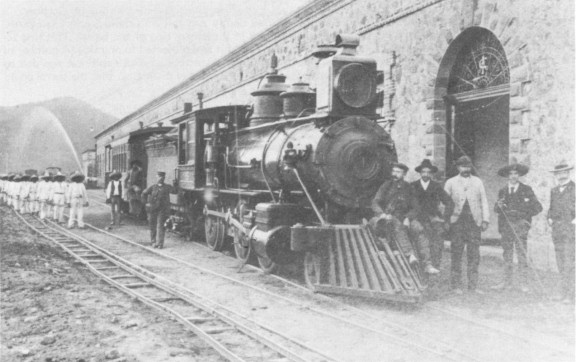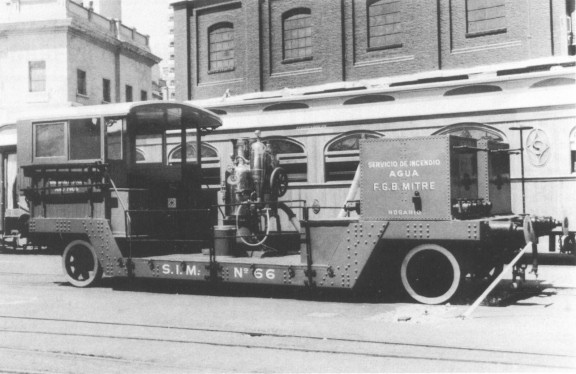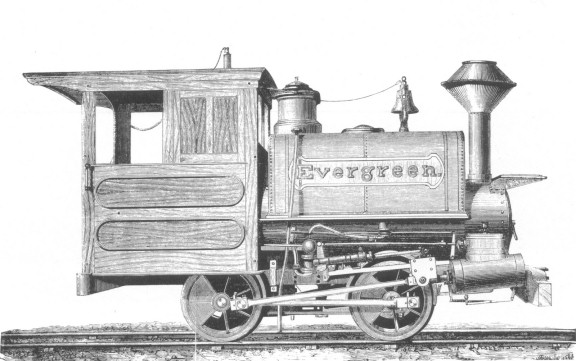
| THE INDUSTRIAL RAILWAY RECORD |
© APRIL 1973 |
RAILWAYS AND INSURANCE
G. S. MOORE
An interesting old letter to an Assurance Company has recently come to light. Sent from the Office of Commissioners of Railways, Whitehall, and dated 28th June 1848, it states:-
'I have been directed by the Commissioners of Railways to request you to inform them whether it has been found necessary to make any difference in the rates at which different descriptions of buildings, or ships and craft in Docks are insured at your Office when the buildings or the quays of the Docks in which the ships and craft may be lying are close to Railways worked by locomotive engines.
'And if such difference has been found to be necessary, the Commissioners will be obliged if you will state the terms on which under different circumstances of this description insurances have been effected in your Office, and any facts of accident by fire from locomotive engines which you can communicate.'
In reply the Assurance Company stated that such happenings were rare and mentioned two actions against the South Eastern Railway at Maidstone Assizes in 1845. They went on to say that the Directors would not knowingly undertake such risks with the prospect of a law suit, except at a higher rate of premium to be determined for each case specially.
Some fifty years later, the same Company received a photograph of a Cotton Mill in Mexico which they insured, in which men appear to be carrying a portable jubilee track, possibly being laid as an aid to transporting a fire fighting appliance. Perhaps this was to impress on the Assurance Company that they were 'fire prevention minded' when locomotives were around! The locomotive shown in the Cotton Mill photograph was originally built for the 3ft gauge FFCC Nacionales Mexicano in July 1881 by Baldwin, works number 5739. Numbered 25, it was a 2−6−0 with 14in by 20in cylinders and 3ft 1in wheels. The engine was listed in the published roster of the NM for 1898 but not for 1902. In 1904 the Mexican Government issued a report on all railways, both public and industrial. The Metepec cotton district was four miles north of the City of Cholula on the FC Interoceanico, also of 3ft gauge, and centered on the town of Metepec, which was connected to Cholula by an industrial line. The locomotive and carriage depicted were without doubt working on this line.

Baldwin 5739 posed on the industrial line which ran from Metepec to Cholula. Note the portable track being laid on the left of the photograph, also the water jet from an "active" fire hose in the left hand background. (collection G. S. Moore)

A Merryweather rail-borne Patent Fire Engine built in 1906 for Argentina.
(collection G. S. Moore)
For the information on Baldwin 5739 I would like to thank Mr H. L. Goldsmith of New York, who contacted Mr G. M. Best of California, an expert on Mexican railways.
"The first electric railway in Norway is being constructed at the Skotfor Factory, its length being, however, only one kilometre.' ("Iron," 28th October 1892.
— KPP)'F. de Saintignon et Cie., Hauts-Fourneaux de Longwy et de la Sauvage, [France, have] bought from the Société des Chemins de fer Cantonnaux, of Luxembourg, the Quiquelsburg [mining] concession of 50 hectares (123½ acres), at Differdange, at the rate of 13,692 fr. per hectare, or £548 per acre. The [iron] mine is put in direct communication with the Longwy blast furnaces by a private railway 9 kiloms. (6 miles) long and 75 cm (2½ ft.) gauge, which carries 360,000 tons per annum by trains loaded with 100 tons....' ("Colliery Guardian," 7th July 1893. Details of this concern's 735mm and standard gauge locomotives are to be found on pp 25 and 36 of the Society's Pocket Book NEF "Industrial Locomotives of North Eastern France": — JKW)

'The use of light locomotives for working colliery and mineral traffic in general is not confined, we hardly need say, to this country, and .... we illustrate [a small engine] made by one of the most influential firms in this line of manufacture in the United States, Messrs. Porter, Bell, and Co., of Pittsburgh. The Evergreen is a light little engine for various purposes, as hauling coal from mine openings to places of shipment, the general hauling of cinder, coal, ore, lumber, &c., at mines, iron furnaces, lumber and other mills. This class of engine is built with cylinders 7in. by 12in., 8in. by 14in., and 8in. by 16in., 5 tons, 7 tons, and 8¾ tons weight. These and others take the place of animal power, running on rails from 16lb. per yard upwards, and on grades up to 350 ft. per mile.'
("The Engineer", 19th November 1875. — REW)'An American steam excavator is now at work in a deep cutting at Bellshill, near Glasgow, on the new line of railway in course of construction for the North British Railway, by Mr Young, railway contractor. The "navvy" is a powerful-looking machine, and employs three men to work it - an engineer, fireman and craneman, but an additional four men are required to shift the waggons to and from the drop. The machine is capable of filling a waggon in a minute, and performs the labour of sixty hands. It is set upon four wheels on iron rails at the bottom of the cutting... The machine, which is the first brought into use in Scotland, is the property of Messrs. John Souther and Co., of Boston. The cost of a new machine, including the expense of bringing it from America, is stated to be £3,000.'
('Iron," 25th March 1876.
— KPP)'In 1838 the Baldwin Locomotive Works of Philadelphia exported three engines, their first shipment to a foreign country, and up to February 1st, 1876, they had exported in all 389 engines, valued at 5,005,964 dols. The increase in the number of engines annually sent abroad by this celebrated manufactory has been quite marked since 1869, when twelve foreign engines were built, followed in 1870 by 15; in 1871, by 19; in 1872, by 45; and in 1873, by 96. The reaction in the construction of railroads in all countries commenced in the year last named, and in 1874 the number of engines built upon foreign orders fell to 58, and in 1875 to 18....' ("Iron," 24th June 1876.
— KPP)